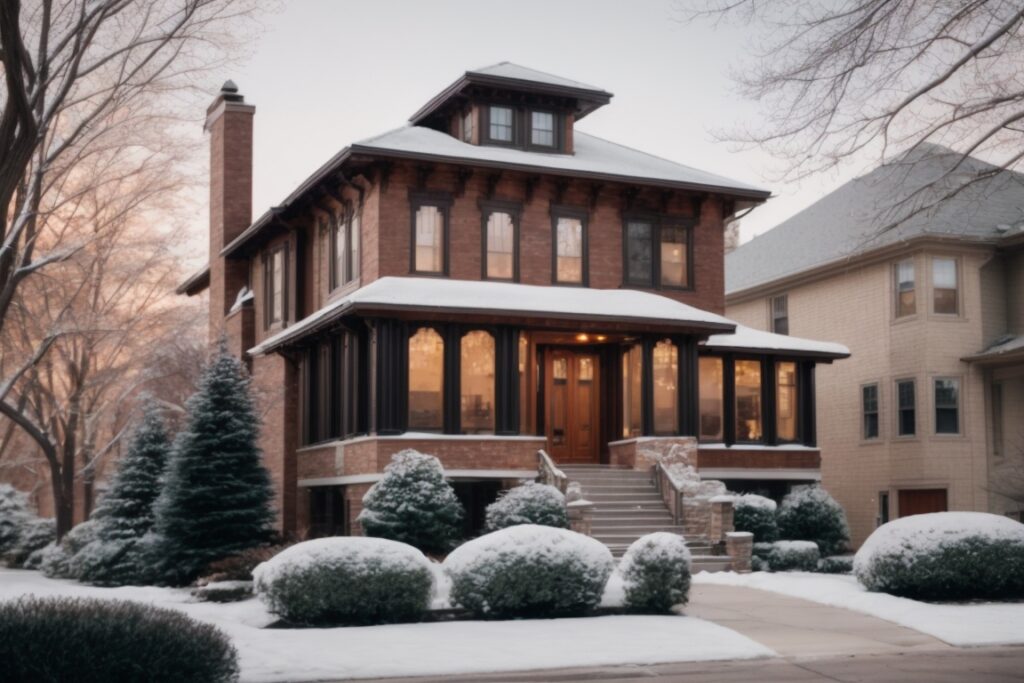
Understanding Thermal Window Film in Chicago’s Harsh Climate
In Chicago, the challenge of maintaining a comfortable indoor environment throughout the year cannot be overstated. Winters in the Windy City can be brutally cold, while summers bring their own set of heat waves. Traditional home insulation has been the go-to solution, but now, thermal window film is emerging as a viable alternative. This innovative material helps mitigate the effects of extreme temperatures, yet many in Chicago remain unaware of thermal window film and its benefits.
The significance of this solution extends beyond comfort. Energy efficiency in residential and commercial buildings is a growing concern due to the rising cost of energy and the environmental impact of excessive energy use. Thermal window film offers a way to improve insulation and reduce energy consumption without the need for extensive renovations typical of traditional insulation methods. However, the lack of awareness about this energy-saving option means many Chicagoans are missing out on a crucial opportunity to enhance their living spaces and reduce their carbon footprint.
As we explore the realm of energy-efficient building solutions, understanding and disseminating information about alternatives like thermal window film becomes increasingly vital. It’s not only about adapting to Chicago’s climate but also about embracing technologies that can lead to long-term savings and environmental benefits. The conversation around energy efficiency is evolving, and thermal window film is a topic deserving greater attention and consideration among property owners in Chicago.
Exploring the Energy Efficiency Dilemma in Chicago
In the bustling urban landscapes of Chicago, the quest for enhanced energy efficiency touches every corner—from towering skyscrapers to residential blocks. The primary issue that residents face is the perpetual battle against severe weather changes which can deeply impact heating and cooling costs. Traditional insulating methods, such as fiberglass or foam, have been the mainstays for decades. However, they present challenges in adequacy and long-term sustainability, especially in regions experiencing extreme temperature swings.
As a result, Chicagoans are increasingly turning their attention to innovative alternatives like thermal window films. These films offer a promise of not just insulating homes but doing so with a minimalistic, retrofit approach that avoids the bulk and labor of traditional insulation. The issue, therefore, revolves around the effectiveness and efficiency of these new technologies in comparison to conventional methods, and whether the investment upfront can truly yield substantial energy savings and comfort year-round.
Surprising Facts About Chicago’s Climate and Energy Efficiency
In Chicago, thermal window films not only promote considerable energy savings but also combat some harsh climatic challenges. Astoundingly, window films can reduce solar heat gain by up to 75%, crucial in summers where temperatures can peak above 90°F. During Chicago’s notoriously frigid winters, these films help retain indoor heat, reducing heating costs by up to 10%. Furthermore, Chicago’s buildings can achieve a payback on investment in window films within three years, underscoring their efficiency and cost-effectiveness in urban settings.
The Economic and Comfort Challenges of Inadequate Insulation in Chicago
Chicago’s climate, with its harsh winters and equally demanding summers, poses unique challenges for homeowners regarding energy efficiency. The problem arises from traditional insulation methods that struggle to cope with these extreme weather conditions, leading to significant discomfort and inflated energy bills. This issue is especially pertinent as energy costs continue to rise and environmental concerns drive the need for sustainable living practices.
Traditional insulation methods like fiberglass or cellulose are prone to various problems such as moisture absorption, which can decrease their insulative effectiveness over time. In winters, inadequate insulation fails to keep the heat contained within the home, forcing heating systems to work overtime and significantly increase energy expenditure. Summers present a similar dilemma; poor insulation allows cool air to escape easily, which not only leads to uncomfortable living conditions but also causes air conditioning systems to use more energy, thus hiking up utility bills broadly.
The reliance on these outdated insulation methods means that many Chicago residents are living in homes that are neither energy-efficient nor financially sustainable in the long term. The discomfort of living in a poorly insulated home can affect every aspect of life, from the physical comfort of residents to the financial stress of high energy bills. Therefore, the problem extends beyond mere choice of insulation; it is about ensuring homes in Chicago are capable of providing comfort without financial burden through more effective solutions like thermal window film.
Understanding the Problem: Chicago’s Unique Climate Challenges
In Chicago, homeowners are constantly battling against extreme weather conditions, from biting winters to humid summers. This climate poses unique challenges when it comes to insulating homes efficiently. Traditional insulation methods have been the norm, but they often fall short in responding adequately to the rapid temperature fluctuations characteristic of the Chicago area.
The core issue here is the limited efficiency of standard insulation during the region’s diverse weather patterns, leading to increased energy consumption and higher utility bills. Thermal window film presents an innovative alternative, designed to enhance insulation effectively and reduce heat loss in winter while blocking out excessive heat during summer. Understanding this problem is essential for homeowners to make informed decisions about how to optimize their home’s thermal efficiency and achieve significant energy savings.
Chicago Homeowners Save Big with Thermal Window Film
In Chicago, the Johnson family experienced significant energy savings after installing thermal window film in their traditional two-story home. Previously, their heating bills skyrocketed during the harsh winters. Post-installation, they reported a 30% reduction in energy costs within the first year. This real-life case highlights the effectiveness of thermal window film over traditional insulation methods in managing energy expenses in severe climates.
Ignoring the Benefits of Thermal Window Film in Chicago
Choosing to overlook the installation of thermal window film in Chicago can lead to several significant disadvantages for homeowners. Thermal window films are designed not just to enhance privacy but also to improve energy efficiency by reducing heat loss during Chicago’s harsh winters and minimizing heat gain in the summers. Ignoring this option can be detrimental in multiple ways.
Firstly, without thermal window film, residents may see a noticeable increase in their heating and cooling costs. Traditional insulation methods can be effective, but the addition of thermal window film provides an extra layer of insulation, leading to more stabilized indoor temperatures. The absence of this film means HVAC systems must work harder, accelerating wear and tear and leading to potential system failures and costly repairs.
Additionally, ignoring thermal window film could mean missing out on the UV protection it offers. Prolonged exposure to sunlight can fade furniture, floors, and curtains, which results in additional expenses to replace these damaged items.
Therefore, by not considering thermal window film as a viable option, homeowners in Chicago might face increased energy bills, premature HVAC system issues, and unnecessary expenses replacing sun-damaged interiors, ultimately affecting their comfort and financial well-being.
Economic Benefits of Thermal Window Film in Chicago
Using thermal window film in Chicago can significantly protect homeowners from undue economic burden. The enhanced insulation properties of thermal film help reduce heating costs during the frigid winters. Over time, this can translate into substantial savings on energy bills, alleviating the financial pressure on households. This kind of long-term saving is crucial in managing a home’s overall expenses in a challenging economic environment.
Thermal Window Film: A Key Solution for Weather-related Challenges in Chicago
In the dynamic climate of Chicago, where winters can be brutally cold and summers uncomfortably warm, residents face significant energy costs as they strive to maintain a comfortable indoor environment. Thermal window film emerges as a particularly effective solution in this battle against weather extremes, directly addressing the problems posed by Chicago’s varied climate.
Thermal window film works by adding an insulating layer to your windows, significantly improving their thermal efficiency. During winter, this film helps retain heat within a home, reducing the need for excessive heating. Conversely, in the summer, it reflects exterior heat, keeping indoor spaces cooler without overreliance on air conditioning. This dual functionality makes thermal window film an ideal choice for year-round comfort in Chicago homes and businesses.
The installation of thermal window film is also a cost-effective alternative to complete window replacement. It can be easily applied to existing glass, offering a far less intrusive and more affordable solution compared to installing new, insulated window units. This aspect is particularly beneficial for Chicago’s residents, who often face budget constraints when updating their homes to be more energy-efficient.
Furthermore, thermal window film not only enhances energy efficiency but also offers additional benefits such as reducing the penetration of UV rays, which can fade furniture and flooring. By addressing these multifaceted concerns — from energy conservation to protection of interior décor — thermal window film positions itself as an essential investment for cost-conscious and climate-aware consumers in Chicago.
Understanding Thermal Window Film in Chicago’s Unique Climate
Thermal window film offers an innovative and energy-efficient solution particularly well-suited to the climate of Chicago. This product tackles key issues homeowners face with heating and cooling, crucial for managing comfort and costs in a region known for its extreme seasonal temperatures.
Designed to reduce the influx of ultraviolet (UV) rays and excess heat during summer and retain indoor heat in winter, thermal window film serves as a multipurpose barrier that enhances overall thermal efficiency. Its application on existing windows can significantly diminish the need for artificial heating and cooling, leading to considerable energy savings and reduced utility bills throughout the year.
Unlike traditional insulation methods which can be invasive and expensive to install, thermal window film is applied directly to the interior or exterior of glass windows. This simplicity in its application ensures minimal disruption to daily life while providing an effective solution against the weather extremities experienced in Chicago. The film not only helps in energy preservation but also contributes to the extended lifespan of HVAC systems by reducing their operational load.
Moreover, by filtering out harmful UV rays, the thermal window film protects interiors from sun damage and fading, adding an aspect of long-term maintenance savings and aesthetic preservation. This straightforward yet powerful solution aligns with the environmental and economic needs of Chicago’s residents, integrating seamlessly into any home or building with minimal hassle.
Benefits and Features: Thermal Window Film in Chicago’s Climate
Thermal window film offers Chicago homeowners significant advantages, particularly suited to the region’s diverse weather conditions. This innovative product enhances window insulation, effectively reducing heat transfer. This results in notable energy savings during both the blistering summers and the frigid winters, helping to manage heating and cooling costs more efficiently. Additionally, thermal window film can block harmful UV rays, protecting interiors from sun damage while maintaining a comfortable indoor environment.
Chicago Residents Share Their Experiences with Thermal Window Film
In Chicago, where winter temperatures can be brutally cold and summer days exceedingly hot, residents are constantly searching for effective ways to manage their home’s climate. Many have turned to thermal window film as a solution, and their testimonials highlight the significant benefits.
Take, for example, the experience of Sarah Johnson from the North Side. She installed thermal window film in her home last winter and has been thrilled with the results. “Not only has my heating bill gone down by 20%, but our home feels much warmer without having to crank up the heat,” she reports. Sarah’s story is just one of many where thermal window film has made a tangible difference in comfort and cost.
Another resident, Mark Sullivan from Lincoln Park, shares a similar success story. After installing the thermal film, he noticed an immediate improvement during the summer. “Our apartment used to turn into an oven with the afternoon sun,” Mark explains. “The thermal window film has significantly reduced the heat, making our living space a lot more comfortable without heavy reliance on air conditioning.”
Case Study: Chicago Homeowner Sees Major Energy Savings with Thermal Window Film
In Chicago, a homeowner installed thermal window film to combat the harsh winters and variable summers. Prior to installation, they faced high energy bills due to ineffective old windows. Post-installation, they noticed a significant drop in the cooling and heating costs, with savings amounting to 30% yearly. This case highlights how thermal window film is not only a cost-effective alternative to traditional insulation methods but also incredibly efficient in Chicago’s challenging climate. Are you ready to experience similar benefits? Contact us today to learn more and start saving!

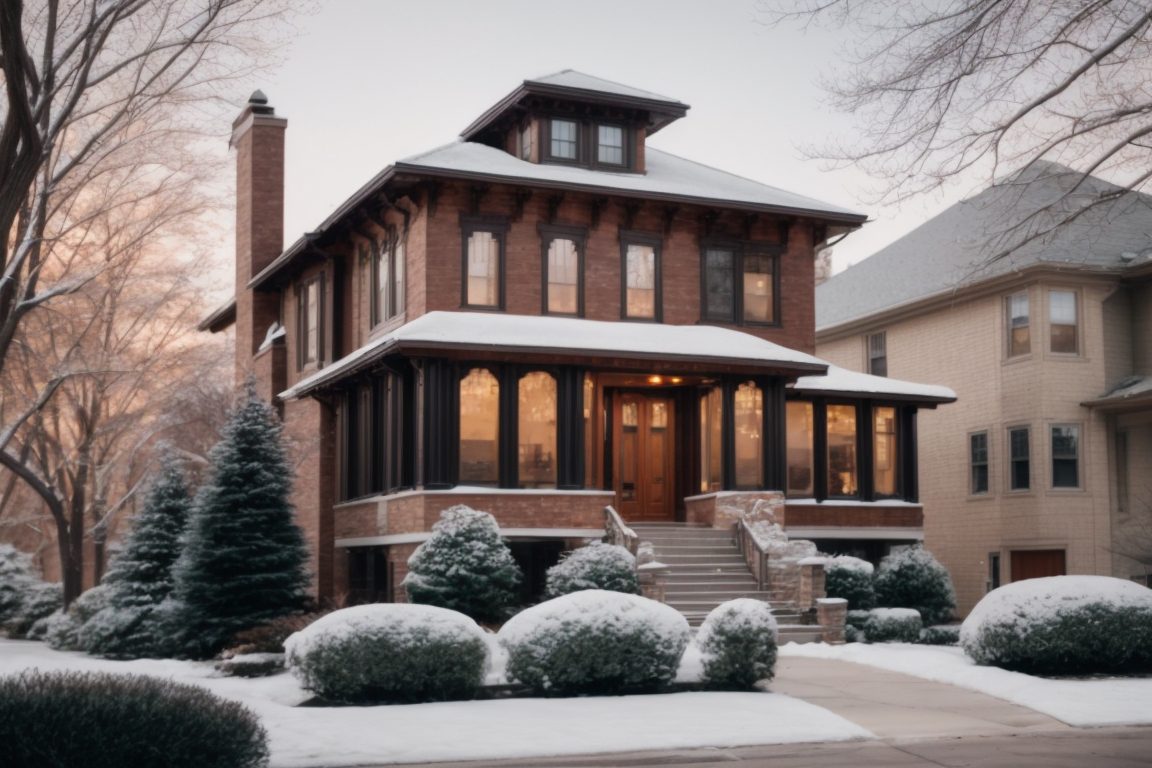

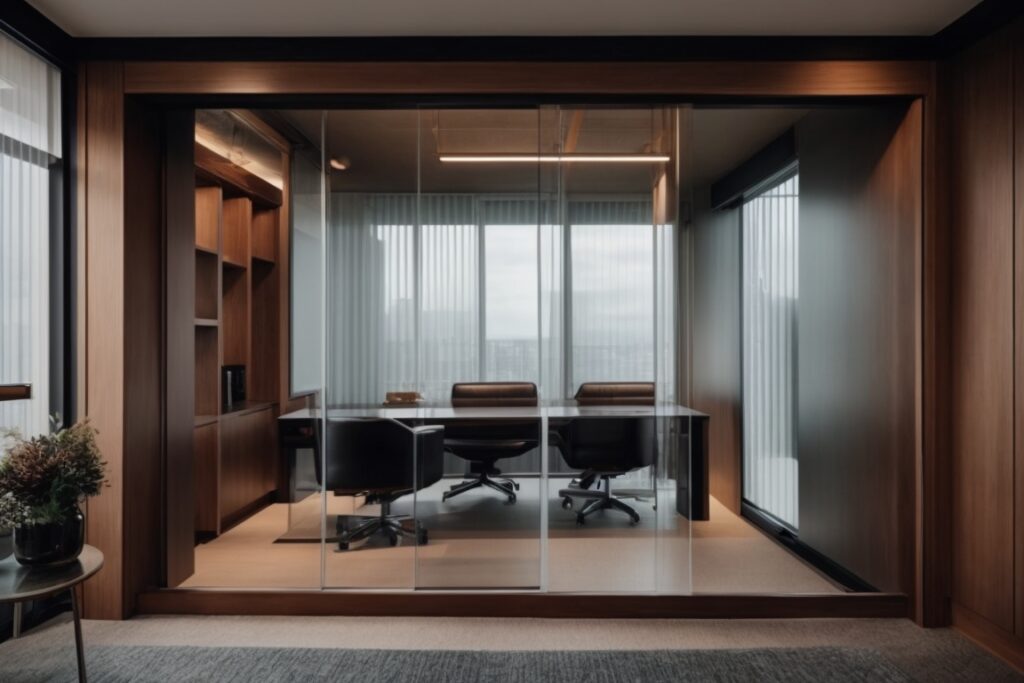
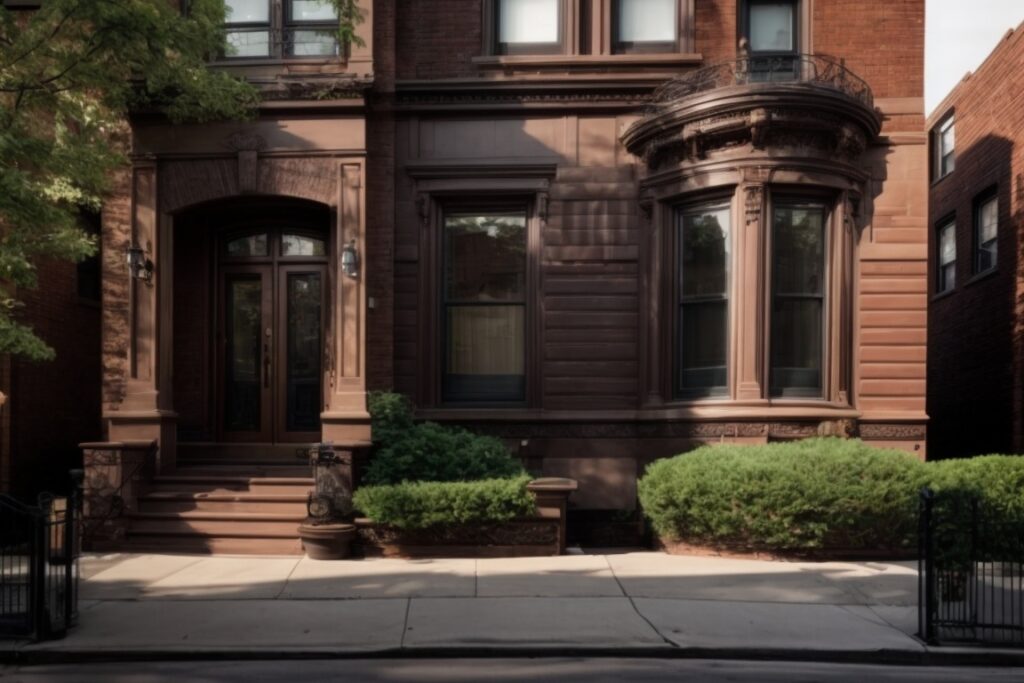
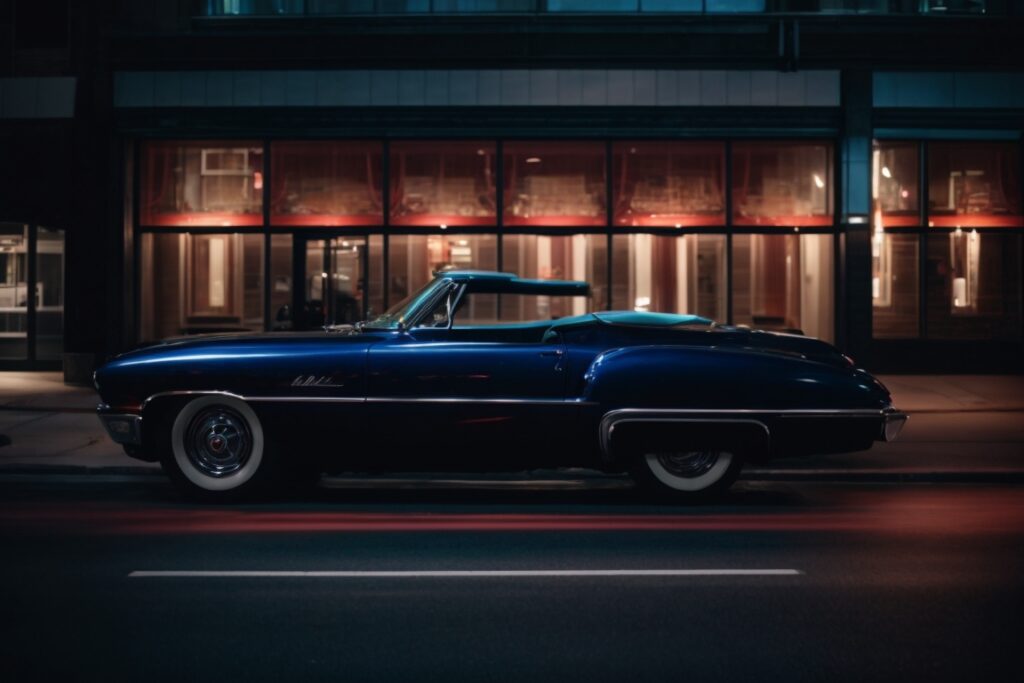
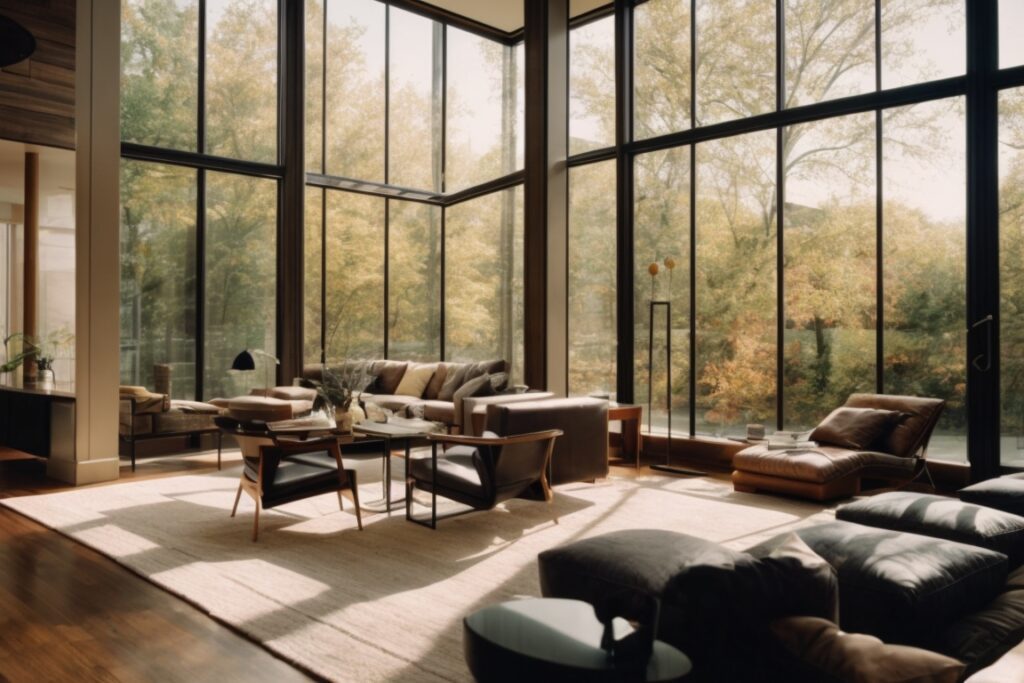
About The Author: Mike Kinsey
Mike Kinsey has more than a decade of experience installing window film in the Chicago area. His years of experience have allowed him to develop a deep familiarity with all of the different types and styles of window film on the market including the various security, privacy, decorative, and energy efficient options. Together, he and his team have completed hundreds of commercial and residential installs, totaling an accumulation of over 250,000 square feet. In addition to being an expert on top brands such as LLumar, C-Bond, HDClear, Solar Gard, Solyx, and Huper Optik, Mike is also certified by 3M, EnerLogic, and AIA for continuing education.
More posts by Mike Kinsey